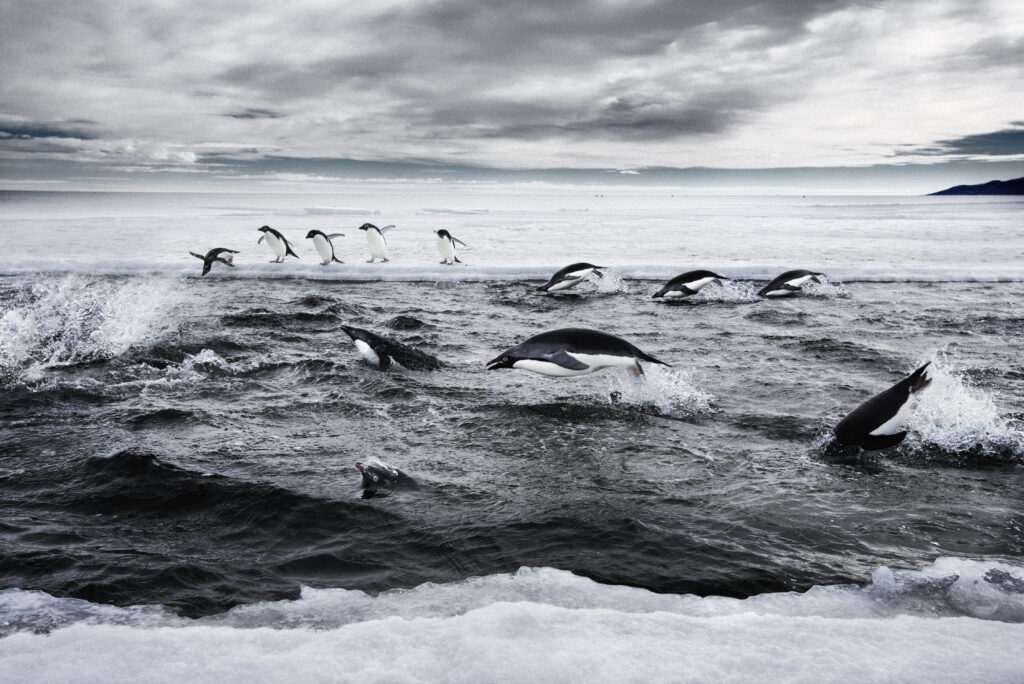Photo by Karl Hermann Kock
Effective control and management of fishing and related activities
A critical responsibility of CCAMLR is monitoring compliance with the Conservation Measures (CMs) to ensure that fishing is conducted in a sustainable manner, to prevent, deter and eliminate illegal, unreported and unregulated (IUU) fishing in the Convention Area and maintain strong market controls to prevent trade in IUU-caught fish.
The CAMLR Convention, which was signed in 1980 and entered into force in 1982, required the parties to implement systems to ensure compliance with CCAMLR Conservation Measures, and to develop international schemes of observation and inspection. CCAMLR’s Scheme of International Scientific Observation was adopted in 1992 will be described in blog #9.
CCAMLR’s System of Inspection was established in 1988 to support the comprehensive inspections of vessels by Contracting Parties. It provides for the ability of a designated inspector from one CCAMLR Member to board and inspect any fishing vessel flagged to another. This is called an at-sea inspection. The System of Inspection provides for procedures for the designation of inspectors, for boarding and inspecting vessels and reporting the results of inspections. During an inspection, inquiries are limited to ascertaining facts in relation to compliance with Commission Measures. All actions arising from an inspection rest with the Flag State of the vessel.

Once it had agreed the systems of inspection and observation, in the 1990s CCAMLR elaborated many specific requirements for vessels and Contracting Parties to ensure compliance with Conservation Measures. The Commission also set up a Standing Committee on Implementation and Compliance to annually review the implementation of the compliance regime.
To participate in fishing activities inside the Convention Area, Members must issue a license, permit or authorisation to their flagged vessels detailing the specific areas, species and time periods for which fishing is authorised. The List of authorised vessels is made available to Contracting Parties, non-Contracting Parties, non-governmental organisations (NGOs) and the public.
Every fishing vessel must be tracked via satellite through a vessel monitoring system (VMS) while it is inside the Convention Area. VMS data are transmitted every hour. All vessels authorised by Members to fish in the Convention Area are required to report VMS data to their Flag State which must then forward these data to the CCAMLR Secretariat. Many vessels also report VMS data directly to the CCAMLR Secretariat in near real-time.
To further improve compliance with conservation measures, Members are required to notify the CCAMLR Secretariat of the movements into, out of and between subareas and divisions of the Convention Area within 24 hours of a movement occurring. A vessel may also provide these reports directly to the CCAMLR Secretariat. This information is validated with VMS data and the list of vessel movements reported is made available to Contracting Parties.

As described in blog 7, from 1997 onwards, to eliminate IUU fishing CCAMLR started to put vessels on an “IUU vessel list” and introduced the Catch Documentation Scheme for Dissostichus spp (CDS). The CDS is implemented to track toothfish from harvest, to the point of landing and throughout the trade cycle and seeks to encompass all toothfish landed and traded by participating States. The CDS is supported by the electronic CDS (e-CDS) which is a user-friendly, web-based application that is used to create, validate and store Dissostichus Catch Documents (DCDs), Dissostichus Export Documents (DEDs), Dissostichus Re-Export Documents (DREDs) and Specially Validated Dissostichus Catch Documents (SVDCDs).
The CDS requires participating States to identify the origins of toothfish entering their markets and to determine if toothfish that was harvested in the CAMLR Convention Area, and is landed or imported into their territories, was caught in a manner consistent with CCAMLR conservation measures.
CCAMLR requires Contracting Parties to inspect all fishing vessels carrying toothfish and at least half of all fishing vessels carrying other Antarctic species that enter their ports. Inspections are undertaken to ensure that if a vessel undertook harvesting activities in the Convention Area, these activities were carried out in accordance with CCAMLR’s conservation measures. The requirements on inspection are aligned with the requirements of the catch documentation system for toothfish; if a vessel intends to land or tranship toothfish (Dissostichus spp.), a Contracting Party must ensure that the catch to be unloaded or transhipped is accompanied by Catch Documentation Scheme (CDS) documentation and must verify that the catch is consistent with the information recorded on the CDS documentation.

To improve the knowledge within CCAMLR of vessels operating inside the Convention Area and to monitor transhipment operations, CCAMLR generally requires Members to provide the details of vessel transhipments to the CCAMLR Secretariat at least 72 hours before transhipment is to occur. A List of transhipments is made available to Contracting Parties.
In addition to the areas highlighted above, CCAMLR has adopted a conservation measure (CM 10-10) to support the implementation of CCAMLR’s Compliance Evaluation Procedure (CCEP) that evaluates Contracting Party implementation of, and compliance with, conservation measures in a responsible, open, transparent and non-discriminatory manner. CCAMLR’s compliance assessment is conducted annually.
All these measures work together to deliver an effective control and management system for fishing and related activities in the Convention Area.